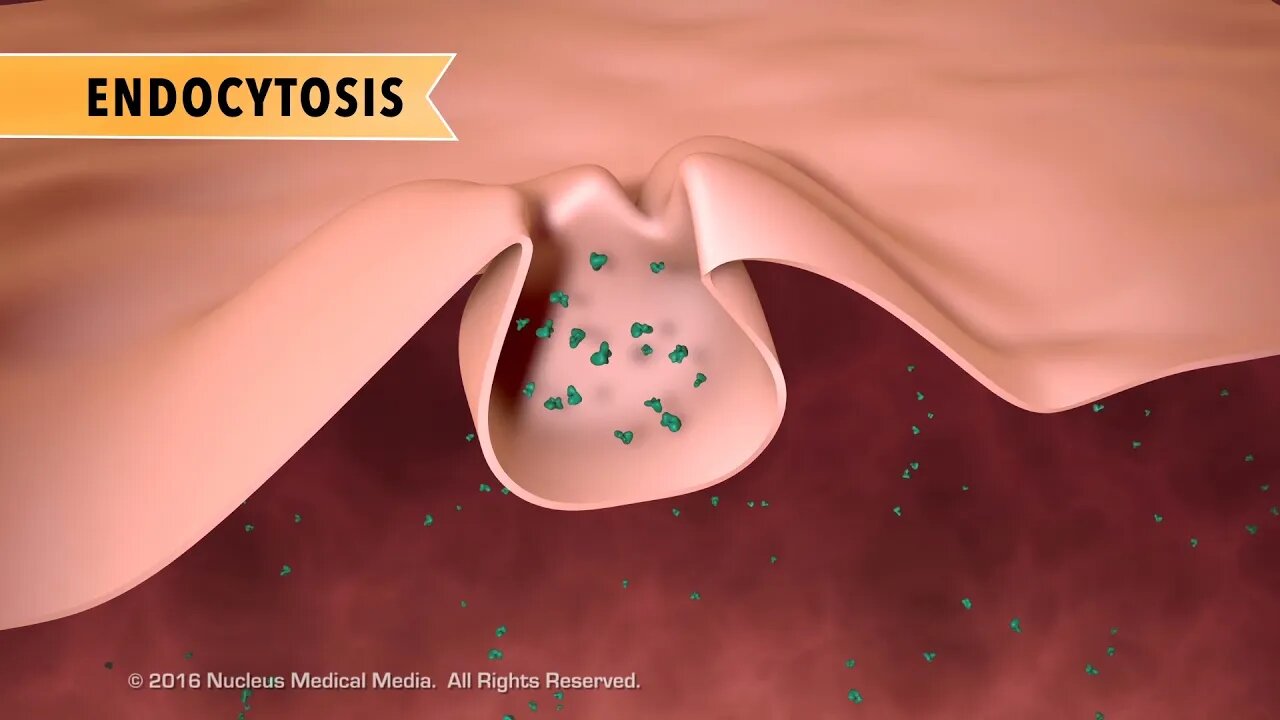Premium Only Content

Cell Biology: Active Transport
For Employees of hospitals, schools, universities and libraries: download up to 8 FREE medical animations from Nucleus by signing up for a free trial at: http://nmal.nucleusmedicalmedia.com/biology_youtube
SCIENCE ANIMATION TRANSCRIPT: In this video, we'll discuss active transport. Active transport is when particles move from an area of low concentration to high concentration. This is also known as moving against the concentration gradient. The key thing to remember is that active transport requires energy. If passive transport is like a ball naturally rolling down a hill, active transport is the opposite. You can get the ball back up the hill, but you're going to have to expend some energy to do it. Cells require this type of substance movement in order to function properly. For example, heart muscle cells responsible for making your heart beat, move molecules or ions against their concentration gradient. So, what are some of the main types of active transport? We have endocytosis, exocytosis, and protein pumps. Sometimes a cell uses active transport to pull in large particles using its cell membrane. This is called endocytosis. One type of endocytosis is called phagocytosis. This often happens when the cell takes in some type of nutrient. In another type of endocytosis called pinocytosis, the cell takes in fluids by creating pockets in the cell membrane. The cell can ingest a large amount of fluid this way by pinching off these cell membrane pockets into the cytoplasm. The opposite of endocytosis is exocytosis. Exocytosis is when something needs to exit the cell. The cell can remove large molecules or wastes this way by fusing the membrane bound vesicles containing them with the cell membrane, forcing them out of the cell. A good way to remember that exocytosis is a way for things to leave the cell is that it shares the first two letters with exit. You can also remember that endocytosis is a way for things to move into the cell because each shares the first two letters with enter. Sometimes the cell uses special protein pumps to move small molecules or ions against the concentration gradient into or out of the cell. An example of this is the sodium potassium pump. In this process, the pump uses energy in the form of ATP molecules to move sodium ions out of the cell and then move potassium ions into the cell. Protein pumps used an active transport require energy because the molecules or ions are moving from an area of low concentration to high concentration. In summary, active transport is when the cell uses energy to move substances in or out of the cell against the concentration gradient via endocytosis, exocytosis, or protein pumps. [music]
NSV15009
-
 2:00:28
2:00:28
Barry Cunningham
9 hours agoBREAKING NEWS: D.O.D. PRESS CONFERENCE WITH PETE HEGSETH AND GENERAL CAINE!
106K13 -
 1:21:29
1:21:29
JULIE GREEN MINISTRIES
2 hours agoLIVE WITH JULIE
64.2K128 -
 LIVE
LIVE
Welcome to the Rebellion Podcast
16 hours agoI Love New York - WTTR Podcast Live 6/26
426 watching -
 1:15:17
1:15:17
Game On!
15 hours ago $1.22 earnedCooper Flagg Could Be a BILLIONAIRE By Age 32!
34.8K1 -
 LIVE
LIVE
The Bubba Army
23 hours agoSOME Charges dropped in Diddy Trial - Bubba the Love Sponge® Show | 6/26/25
1,558 watching -
 49:49
49:49
Esports Awards
19 hours agoHow Lethamyr Built Rocket League’s Wildest Career | Origins Podcast #13
52.2K -
 LIVE
LIVE
PudgeTV
2 hours ago🟠 Gaming on Rumble | Steam DEMO Day | Variety Stream
121 watching -
 2:00:21
2:00:21
BEK TV
23 hours agoTrent Loos in the Morning 6/26/2025
23.2K1 -
 LIVE
LIVE
Father Russell
4 hours agoDune Awakening | Tier 6 | Finding The Hephastus
68 watching -
 LIVE
LIVE
FyrBorne
12 hours ago🔴Warzone M&K Sniping: To Valhalla We Ride
191 watching